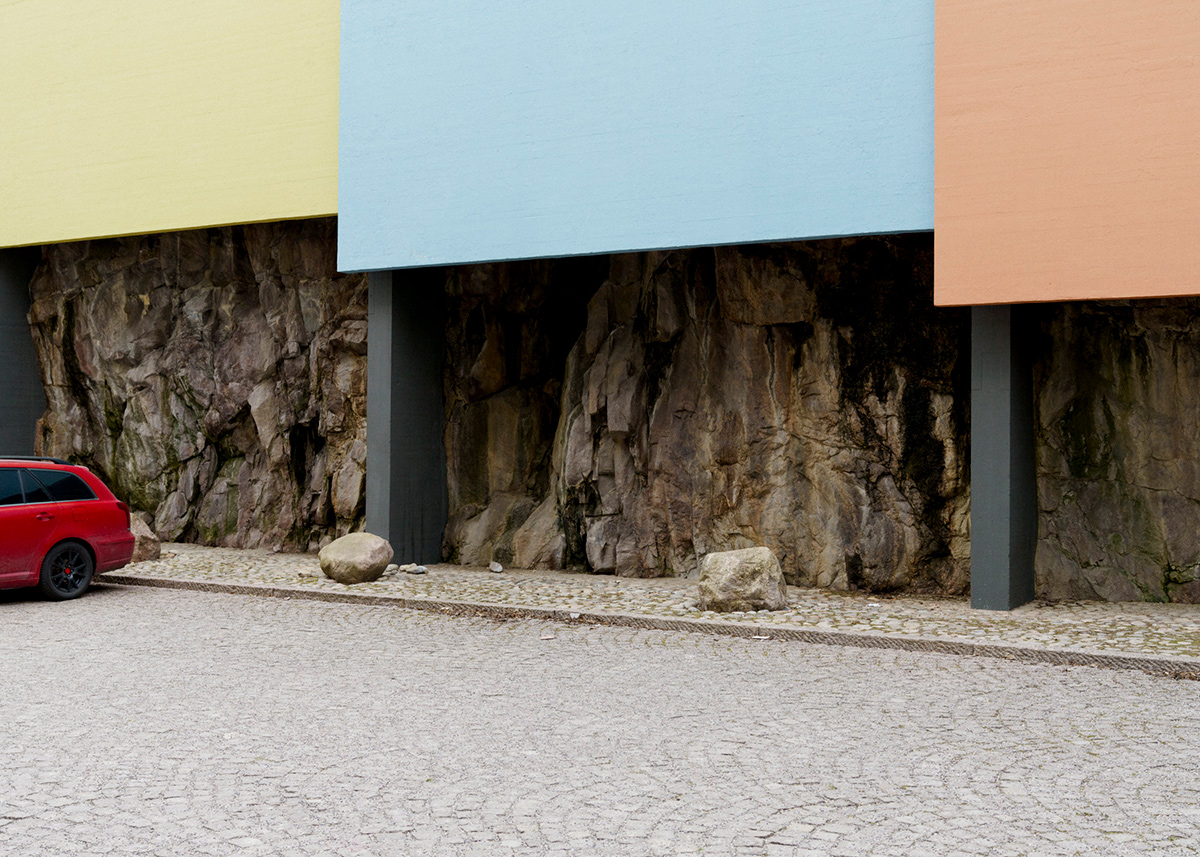Claude Rutault, a French artist whose work stood at the intersection of painting and conceptual art, died on May 27 at a retirement home in Boulogne-Billancourt, France, near Paris. He was 80.
His daughter, Ninon Rutault, said that he had suffered from Alzheimer’s disease for about a year and a half, but that the cause of death was not known.
Mr. Rutault, who spent most of his career in Paris, was much better known in Europe than in the United States — partly because he didn’t speak English and rarely traveled, and because his work was more frequently exhibited there.
He became famous in the 1970s for what he called his “dé-finition/méthode” paintings, which were in fact sets of instructions for making a painting. One of his signature “protocols,” as they were also called, was to paint a canvas the same color as the wall on which it would hang. He did not do this himself; rather, he enlisted a “charge-taker” — an art collector, museum representative or independent curator — to make the work according to his specifications.
Although these monochromatic works linked him to both avant-garde artists like Kazimir Malevich and minimalists like Robert Ryman and Ad Reinhardt, his artistic ideas were more philosophical than material, said Julie Morhange, the senior director of the Perrotin gallery in Paris, which has represented him since 2010.
“Many artists in that era were working on conceptual art and radicality, but I have to say that Claude was not part of any movement,” she said in an interview. “He very much knew what was happening with this generation of artists; he was friends with many of them, but he was not part of any group.”
Mr. Rutault’s wryly iconoclastic process represented a break from the past, subverting the basic notion that painters are people who paint. Instead of making paintings, he wrote texts; yet his work was both collaborative and potentially open-ended. His “protocols” could be painted and repainted, as the charge-taker saw fit. As a result, he said, “The painting is never finished.”
“He made a huge contribution to the history of painting,” Ms. Morhange said. “He’s one of the only artists who won’t see what his work looks like in the future, and it will still be his work.”
Claude Robert Georges Rutault was born on Oct. 25, 1941, in Trois Moutiers, France, to Lucien Rutault and Béatrice Cartault. His father was a real estate broker who handled local agricultural properties.
Trois Moutiers (the name means “three houses”) was a very small town, and he quickly outgrew it. The nearest school was about 25 miles away, in the town of Saumur, and he boarded there from when he was about 8 until he graduated at age 15.
“He was not very close to his parents, because he didn’t live with them very much,” his daughter said. “My grandparents also didn’t like what he did as an artist. They wanted him to have a different kind of career.”
After grade school, Mr. Rutault attended lycée in Nantes and then moved to Bordeaux to attend Sciences Po Bordeaux, a political science institute. He took little interest in his formal studies and rarely attended class, Ninon Rutault said, but he did graduate thanks to a classmate, Annie Scamps, with whom he quickly fell in love. “She made him work just hard enough to be able to graduate,” Ms. Rutault said.
The couple moved to Paris after graduation, and Ms. Scamps worked in marketing and later in banking. They married in April 1968.
By then, Mr. Rutault had already started working as an artist, making mixed-media paintings using acrylics and drawings that incorporated clippings from Le Monde, the Paris evening newspaper.
When they were awaiting the birth of their first child, Mr. Rutault decided to freshen up their apartment. While he was painting the kitchen one afternoon, his paintbrush swept across one of his own canvasses, which was hanging on the wall — it may have been an accident, or maybe not. (“He never used the word ‘accident,’” Ninon Rutault said.)
“He stopped for lunch and came back and he decided to paint over the entire painting,” said Natacha Polaert, a curator who knew Mr. Rutault for a decade. “That became the foundational protocol: A painting must be painted on the wall the same color as the wall.”
That year Mr. Rutault presented the first protocol at his studio on Rue Clavel in Paris, and received his first important critical attention. That space subsequently “became legendary for a generation of younger French artists and curators,” Ms. Morhange said.
The couple’s son, Achille, was born in 1973. Because of an undefined congenital illness, he never learned how to speak or walk. Mr. Rutault became his son’s primary caretaker, working from home.
Staying home with his son limited his options to travel for art-world events and openings, Ninon Rutault said, but he never regarded this as a problem. “He always said that it helped him to work and to think, and to question the world,” she said. “He did everything he could do to make his son happy despite a life that could have been sad.”
Most of Mr. Rutault’s work involved writing. From 1973 onward, he wrote more than 650 “dé-finition/méthodes,” which were published in two books; the first was published in 2000 and a second, with the most complete list, in 2016.
“Claude called himself a painter,” Ms. Polaert said. “Everyone else called him a conceptual artist. It’s true that he did not touch paint or canvasses, but instead he wrote paintings.”
Mr. Rutault had three solo exhibitions at the Centre Georges Pompidou in Paris, in 1992, 2002 and 2015, and one alongside Picasso’s paintings at the Musée Picasso, also in Paris. His work was also exhibited scores of times in other individual and group gallery shows.
In 2014, at age 73, he had his first solo exhibition in the United States, at the Emmanuel Perrotin gallery in New York; in 2020, he had a solo show at the Pacific Design Center in Los Angeles.
His wife died four years ago, and their daughter said that her death was a decisive factor in his health. He became depressed, she said, and found it hard to focus. In 2020, he was diagnosed with Alzheimer’s disease.
“She was the first one to whom he presented his ideas, she was the first one who read back what he wrote before he presented it to other people,” Ninon Rutault said. “She usually had the final word on the exhibition. If there was something she didn’t like, it was taken off.”
The last exhibition of his work while he was alive, “Claude Rutault: A Proposal to Peter Nadin, 1979; Realized 2022,” took place at the Off Paradise gallery on the Lower East Side of Manhattan this spring. It was the realization of a set of instructions he had conceived for the pseudonymous gallery owner, who had a space on West Broadway in the late 1970s. For the show, Mr. Nadin chose to paint the space, and the canvasses, a garishly bright lemon yellow.
Mr. Rutault had been living in Vaucresson, near Paris, in recent years, after his son was moved to a residential care facility there. He spent his final days at a retirement home near his daughter’s family, and had asked to stay there rather than go to a hospital.
In addition to his daughter and son, he is survived by two grandchildren.
Mr. Rutault ensured, Ms. Polaert said, that his work would continue to have a life beyond his own.
“His greatest contribution was to create a never-finished body of work,” she said. “That was very generous, in the sense that not many artists would accept for their work to be constantly painted over, in perpetuity.”





















Discussion about this post